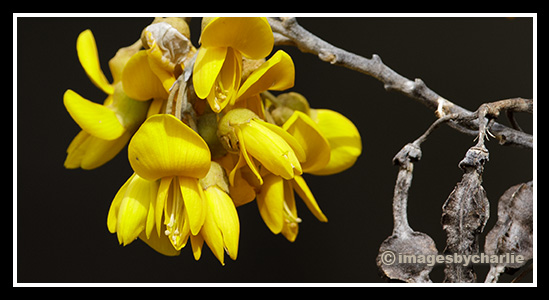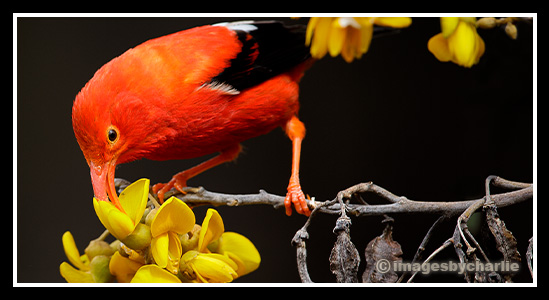Photos, interesting facts, announcements and some personal thoughts.
Feel free to subscribe below for blog updates. Manage your subscription.

Photos, interesting facts, announcements and some personal thoughts.
Feel free to subscribe below for blog updates. Manage your subscription.

Haleakalā Silversword, ʻAhinahina
Argyroxiphium sandwicense subsp. macrocephalum
I received a gentle nudge from a subscriber that a blog post was overdue. Thanks for your interest. I have chosen a subject that I have been thinking about for awhile, but which I am at a loss at where to start. This is because a blog cannot do this plant justice. But here it goes.
The Haleakalā silversword, named by Hawaiians as ‘ahinahina, has an incredible story. There has been a considerable amount of research on this native plant, which is only endemic to the upper slopes of Haleakalā, a volcanic mountain on Maui with an elevation of 10,000 ft. In other words, the ‘ahinahina is not endemic to any of the other islands in the Hawaiian chain.
The ‘ahinahina belongs to a group of approximately 30 related plants in what is called the Silversword Alliance. Exactly how an ancestor to plants in the Alliance came to the islands will never be proven. However, scientists now believe that a seed hitched a ride to the islands on a bird, and more interestingly, botanists have identified the family of the traveling seed.
First, I would like to acknowledge all the scientists and botanists who contributed to this research, as I am sure there were many who spent countless hours doing mind-numbing work. However, I would like to name a few of the botanists most noted for their research on this topic and leave it up to my dear subscribers to identify the others.
In the 1800s, a botanist named Asa Gray was the first to make a connection between sunflowers and silverswords, putting them together in the tribe Madiinae in plant taxonomy. Then years later in 1953, a young botanist named Sherwin Carlquist was hiking in Haleakalā crater and immediately recognized similarities between the ‘ahinahina and the California tarweed, the latter which belongs to the sunflower family. He researched this further and his findings supported his intuition. However, his beliefs regarding long-distance seed dispersal and the relationship between the tarweeds and silverswords were controversial at the time and not well-received by some of his peers. Indeed, at first glance, these two plants do not look similar to each other and you might not make the connection unless you are as astute as Sherwin Carlquist was.
With significant interest in how plants evolved in Hawaii, partly due to the young age of the islands and long distance from other land masses, botanists continued to research plants in the Silversword Alliance. Finally, after decades of conflicting opinions, professor Bruce G. Baldwin of U. C. Berkeley spearheaded DNA research that supported Carlquist’s theory. Much of the publications are very technical. I even attempted to read the book “Tarweeds & Silverswords: Evolution of the Madiinae (Asteraceae)”, written by Sherwin Carlquist, Bruce Baldwin and Gerald Carr. I managed to get through the first chapters which were very interesting and I especially liked the family tree diagrams. The book is written for botanists and is filled with technical data. I was hoping to see more photos, but I suppose that is my job. As I understand, the botanists concluded that an ancestor to the California or North American tarweed was an ancestor to plants in the Silversword Alliance. In other words, these tarweeds and silverswords descended from a common ancestor. Asa Gray and especially Sherwin Carlquist were correct all along, but it took modern technology to support their conclusions.
As I mentioned earlier, the story of the ‘ahinahina cannot be told in a single blog. Therefore, I will end here and continue with more interesting details in another blog or two. I almost forgot that this blog about photography. If you look closely at the photo above, you might see the resemblance of the ‘ahinahina to sunflowers.
p.s. If any botanists out there have new information to share about the ‘ahinahina, feel free to send updates via the Contact form and include links to reliable sources.

Hawaiʻi ʻAmakihi, pronounced “ah-mah-kee-hee”
Chlorodrepanis viren
The ʻamakihi is a Hawaiian honeycreeper forest bird. Like the ʻiʻiwi, they feed on nectar from māmane and ‘ōhiʻa flowers. Both the ʻamakihi and māmane, pictured above, are endemic to Hawaii. The Hawaiʻi ʻamakihi is found on the Big Island, Maui and Molokaʻi. They were last seen on Lanaʻi in 1976.
Until 1995, the Hawaiʻi, Oʻahu (C. flava) and Kauaʻi (C. stejnegeri) ʻamakihis were believed to be the same species. Based on genetic studies, they are now classified as three separate species.
Feathers of the Hawaiʻi ʻamakihi are yellow-green to olive with males sporting brighter colors and darker lores than females. A lore is the region between the eye and bill. Their bill is decurved which distinguishes them from the ʻalauahio.
The Hawaiʻi ʻamakihi is believed to have developed some resistance to avian malaria.

The māmane is an endemic plant in Hawaii that belongs to the pea or legume family (Fabaceae). It has deep green compound leaves (leaves with leaflets attached to the middle vein that have their own stalks) with 6 to10 pairs of leaflets. Yellow pea-like flowers bloom in winter and spring. Māmane grows into bushes and trees at mid to high elevations on Hawaiʻi and Maui. It is rare on Molokaʻi, Oʻahu and Kauaʻi, and believed to be extinct on Lanaʻi. Its conservation status is vulnerable.

Endemic forest birds such as the ʻiʻiwi, ʻapapane and ʻamakihi are often seen feeding on its nectar during flowering season. The brown woody pods are constricted as seen in the photo below.

The palila, the last-remaining endemic honeycreeper with a finch-like bill found only on the Big Island of Hawaii, is dependent on māmane as its main source of food and nesting sites. These birds have adapted to eating the seeds which contain bitter alkaloids that are toxic to other wildlife. According to ecologist Richard Switzer, the birds are critically endangered because māmane trees are being destroyed by livestock. Officials are installing fences to enable māmane to grow back.

Nēnē geese are endemic to Hawaii, but they might remind you of Canada geese. In fact, these two species are believed to have descended from a common ancestor. However, some sources report nēnē to have descended from their North American relatives. Ancestry aside, there are several noticable differences. Nēnēs are much smaller than their North American relatives and, instead of solid black, their neck is covered with buff-colored feathers arranged in a sweeping pattern.
It is believed there were tens of thousands of nēnēs before man arrived in the islands. However, due to unmanaged consumption and predation by introduced animals, nēnēs were at the brink of extinction in 1952 when their population dropped to 30 birds. Today, based on recovery efforts in Hawaii and by a naturalist in England, the nēnē population has increased to over 3,000 across the islands. However, this is still relatively low considering threats from inbreeding and predation from non-native animals. Also, motorists fatally struck several nēnēs at the Volcanoes National Park and Haleakala National Park. Nēnēs are the last remaining species of native geese in Hawaii from what was believed to be 5 species. Federally, nēnēs are listed as Threatened. In the State of Hawaii, they are listed as Endangered.
Nēnē, pronounced “nay-nay”, became the State Bird in 1957.

Birds are jewels of the animal kingdom and forest birds in Hawaii are no exception. The ʻiʻiwi (pronounced ee-ee-vee), a Hawaiian Honeycreeper, is a striking bird with orange, black and white feathers. They are endemic to Hawaii where they evolved into unique species. They were once common in the islands, but today they are only found at higher elevations due to the deadly avian malaria. This disease is spread by mosquitos who thrive in warmer climates. The mortality rate of ʻiʻiwis infected with avian malaria is 95%. Unfortunately, climate change is enabling mosquitos to move further up the mountains.ʻIʻiwis are listed as threatened under the Endangered Species Act.
It is an honor and joy to photograph these beautiful birds. They are only found in Hawaii and I hope they will be around for future generations to enjoy.